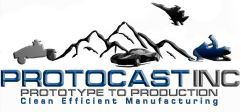You’ve heard it once and you’ll hear it again: “Safety first!” When it comes to just about anything, safety should always come first. As you can probably imagine, there are a great number of safety precautions to take into consideration when it comes to metal casting. After all, metal casting is an inherently dangerous activity that can result in serious injury and should be treated with good judgment and caution on the practitioner's behalf. Prototype Casting is dedicated to making sure that we follow the necessary safety precautions to mitigate any possibility of harm.
Since safety is a major aspect of our work here at our Denver machine shop, we wanted to dedicate a post to some of the safety tips and best practices that the investment casting industry uses to ensure a high level of product quality as well as employee protection. Check out some of these useful safety tips from our investment casting foundry!

